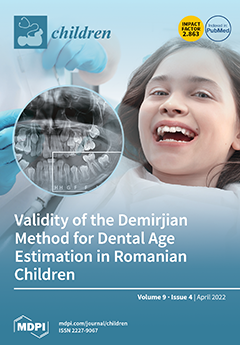Objective: To assess the oxidant and antioxidant status in neonates with and without hyperbilirubinemia and their association with early manifestations of acute bilirubin encephalopathy (ABE), in addition to eliciting the possible oxidative effects of phototherapy. Methods: This prospective observational study was conducted with 104 full-term newborns at Menoufia University Hospitals from January 2020 to January 2021 to help resolve the debate regarding whether bilirubin is an antioxidant. The cases group (Group I) included 52 full-term newborns (37–40 weeks) with hyperbilirubinemia during the neonatal period, while the control group (Group II) included 52 healthy, full-term age and sex-matched newborns who did not have hyperbilirubinemia. The cases group was further subdivided into Group Ia (
n = 12), which included newborns who presented with neurological manifestations suggesting early ABE, and Group Ib (
n = 40), which included newborns with no signs suggestive of ABE. All newborns were subjected to clinical and neurological examinations, as well as laboratory investigations. Results: Comparing the specific biological markers between the Group 1 subgroups before phototherapy, the mean plasma levels of prostaglandin-E
m, prostaglandin E
2, and TSB were significantly higher in Subgroup I(a) (all
p < 0.05). After phototherapy, Subgroup I(a) patients had significantly higher levels of prostaglandin-E
m, DSB, and TSB (
p < 0.05). The biological marker levels improved after phototherapy in terms of TAC (0.811 vs. 0.903), MDA (8.18 vs. 5.13), prostaglandin-E
m (37.47 vs. 27.23), prostaglandin E
2 (81.09 vs. 31.49), DSB (1.21 vs. 0.55), and TSB (16.63 vs. 8.26;
p-value < 0.05). Conclusion: Our study showed that an elevated level of serum bilirubin increases oxidative stress and decreases antioxidant capacity. The reduction in bilirubin levels by phototherapy is associated with a decrease in oxidative stress markers (MDA, PGE
m, and PGE
2) and an upsurge in TAC, highlighting the absence of oxidative stress effects arising from phototherapy. Neonates with neurological manifestations suggesting ABE had higher levels of oxidative stress markers and lower levels of total antioxidant capacity than those without.
Full article






